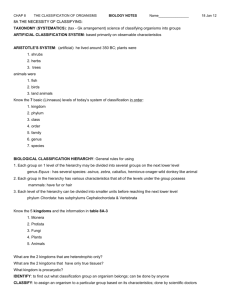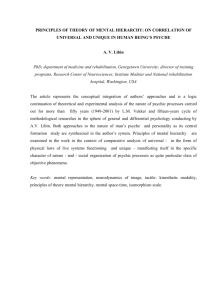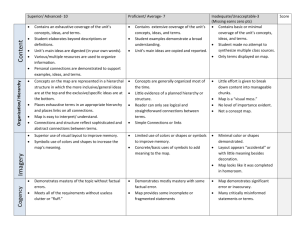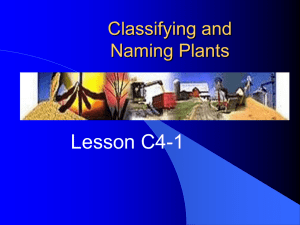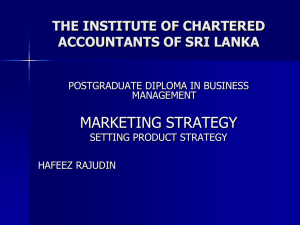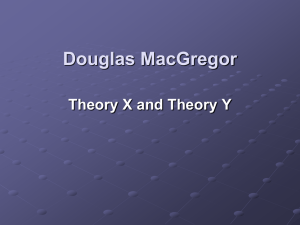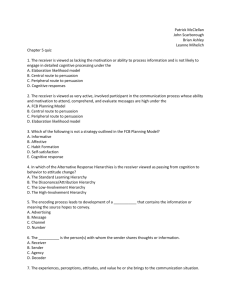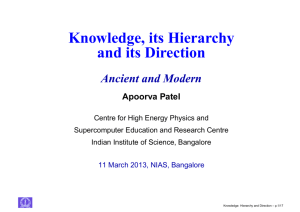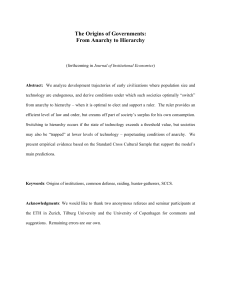Lecture 2
advertisement
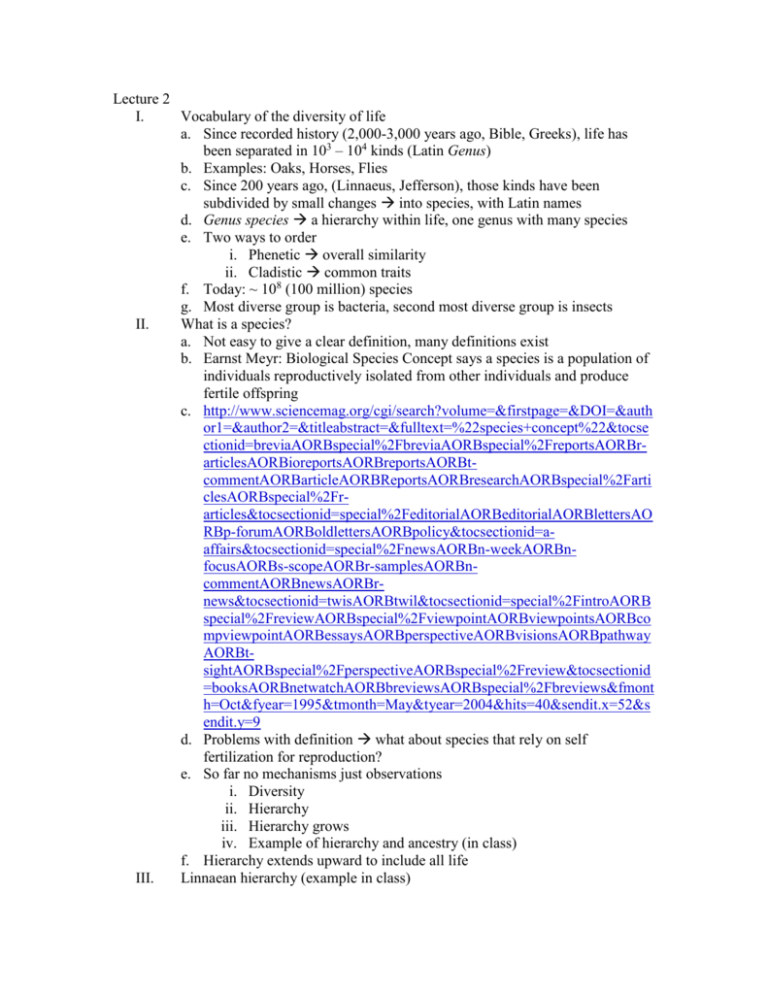
Lecture 2 I. Vocabulary of the diversity of life a. Since recorded history (2,000-3,000 years ago, Bible, Greeks), life has been separated in 103 – 104 kinds (Latin Genus) b. Examples: Oaks, Horses, Flies c. Since 200 years ago, (Linnaeus, Jefferson), those kinds have been subdivided by small changes into species, with Latin names d. Genus species a hierarchy within life, one genus with many species e. Two ways to order i. Phenetic overall similarity ii. Cladistic common traits f. Today: ~ 108 (100 million) species g. Most diverse group is bacteria, second most diverse group is insects II. What is a species? a. Not easy to give a clear definition, many definitions exist b. Earnst Meyr: Biological Species Concept says a species is a population of individuals reproductively isolated from other individuals and produce fertile offspring c. http://www.sciencemag.org/cgi/search?volume=&firstpage=&DOI=&auth or1=&author2=&titleabstract=&fulltext=%22species+concept%22&tocse ctionid=breviaAORBspecial%2FbreviaAORBspecial%2FreportsAORBrarticlesAORBioreportsAORBreportsAORBtcommentAORBarticleAORBReportsAORBresearchAORBspecial%2Farti clesAORBspecial%2Frarticles&tocsectionid=special%2FeditorialAORBeditorialAORBlettersAO RBp-forumAORBoldlettersAORBpolicy&tocsectionid=aaffairs&tocsectionid=special%2FnewsAORBn-weekAORBnfocusAORBs-scopeAORBr-samplesAORBncommentAORBnewsAORBrnews&tocsectionid=twisAORBtwil&tocsectionid=special%2FintroAORB special%2FreviewAORBspecial%2FviewpointAORBviewpointsAORBco mpviewpointAORBessaysAORBperspectiveAORBvisionsAORBpathway AORBtsightAORBspecial%2FperspectiveAORBspecial%2Freview&tocsectionid =booksAORBnetwatchAORBbreviewsAORBspecial%2Fbreviews&fmont h=Oct&fyear=1995&tmonth=May&tyear=2004&hits=40&sendit.x=52&s endit.y=9 d. Problems with definition what about species that rely on self fertilization for reproduction? e. So far no mechanisms just observations i. Diversity ii. Hierarchy iii. Hierarchy grows iv. Example of hierarchy and ancestry (in class) f. Hierarchy extends upward to include all life III. Linnaean hierarchy (example in class) IV. V. a. Species b. Genus c. Family d. Order e. Class f. Phylum g. Kingdom h. What did this organizational chart mean? Where did it come from? History of theories about species a. In 1750: hypothesis 1 said species created all at once, stable thereafter b. Problems by 1850 i. Fossils evidence of extinct species, in old rocks, ancient species ii. Earth itself changes evidence of old seas sitting over old mountains, etc iii. Different continents have different species did that mean there was more than one creation? c. Hypothesis 2 said creation and extinction occur all the time, each creation is de novo d. Problem: no evidence of de novo, no mechanism for de novo e. Hypothesis 3 said life as a whole approaches perfection since creation and species are in a current state of being imperfect f. Problem: how can anything but a species survive longer than an individual? g. Darwin comes 100 years after Linnaeus and gives novel ideas of why species exist i. No purpose to life ii. No perfection to which life strives iii. No perfectibility of life iv. No stability of life v. Instead: balance among individuals belonging to species, variation at every generation, new species come from old species vi. His insight was to notice that species are not perfectly stable and each individual is different vii. If species in the past were not stable, and if the variation among their individuals was inherited, and if some variations contributed to the likelihood of survival, then one species can give birth to another from among its variants The Origin of Species viii. LCA last common ancestor, species that now does not exist but gave rise to existing species ix. Hierarchy history of life through LCA x. Most species are LCA of nothing and go extinct h. Darwin’s theory only makes sense if we examine geological time, because in our lifetimes everything seems stable New model for species a. All species are related to each and share a simple common ancestor b. Caeffrer Natural History 6/95. 33-36 c. Clade shared derived character inherited from common ancestor d. Clades nest e. Data set patterns of characters that repeatedly form the same species

